Abstract
Comparisons were made between the free amino acid composition in leaf exudates and that in pure phloem sap, using twin samples taken from a single leaf of two oat (Avena sativa L.) and three barley (Hordeum vulgare L.) varieties. Leaf exudate was collected in a 5 mm EDTA-solution (pH 7.0) from cut leaf blades and phloem sap was obtained through excised aphid (Rhopalosiphum padi L.) stylets. Fluorescent derivatives of amino acids were obtained using 9-fluorenylmethyl chloroformate and were separated by means of high performance liquid chromatography. The total concentration of free amino acids varied considerably in the exudate samples. There was no correlation between the total amino acid content in the exudate samples and that of the corresponding phloem sap samples, but the amino acid composition of the corresponding samples was highly correlated (median R2-value 0.848). There was only limited between-plant variation in phloem sap amino acid composition. Nevertheless, in comparisons involving all samples, many of the amino acids showed significant correlations between their relative amounts in exudate and phloem sap. The results presented here indicate that the exudate technique holds great promise as an interesting alternative to the laborious and time-consuming stylet-cutting technique of obtaining samples for comparative studies of phloem sap.
Full text
PDF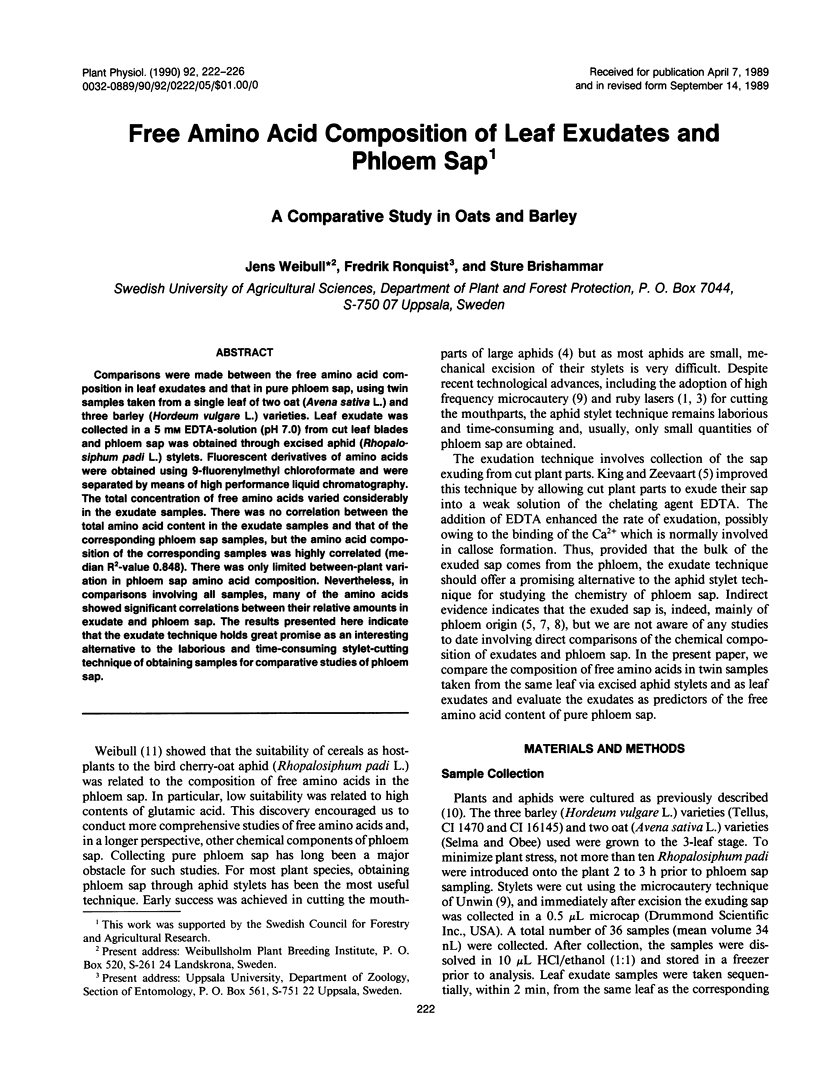
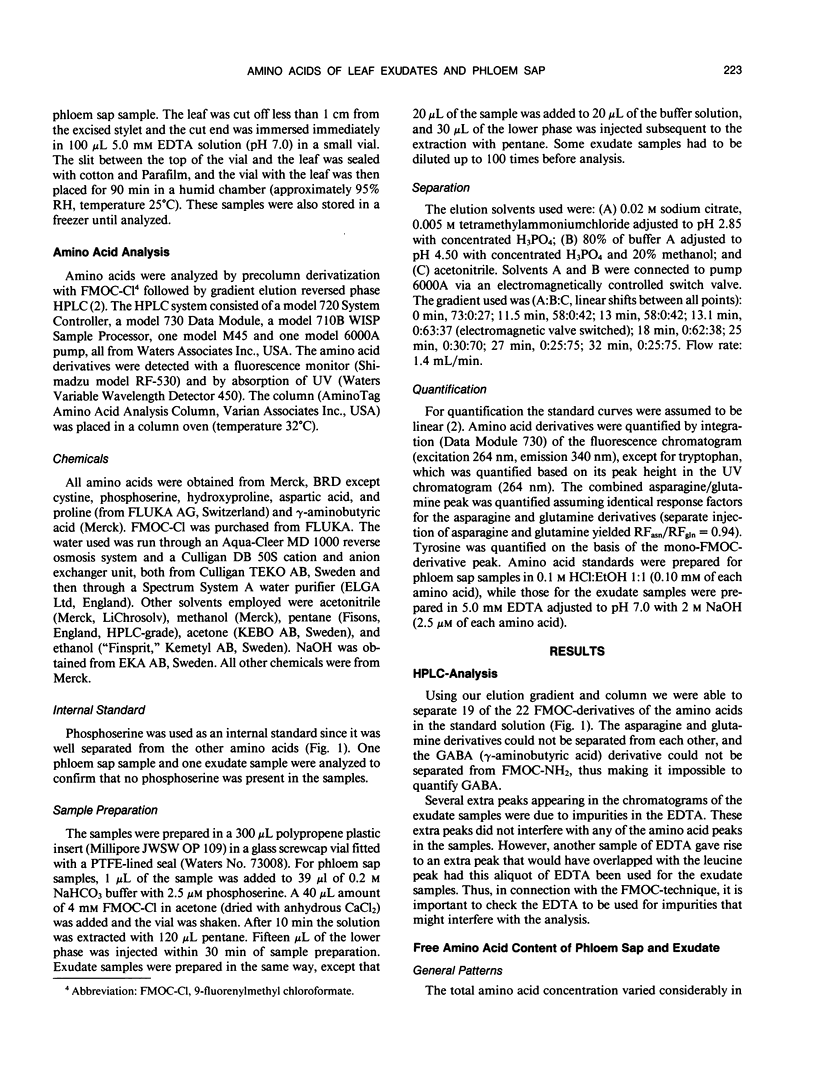
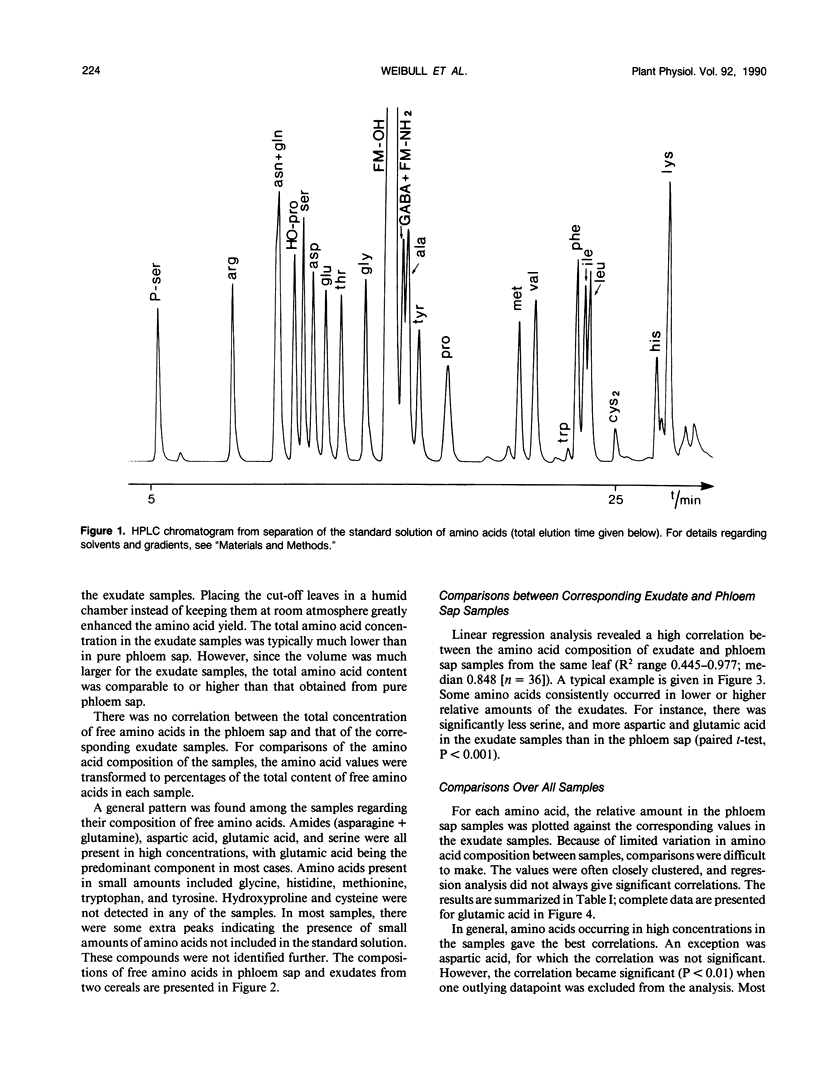
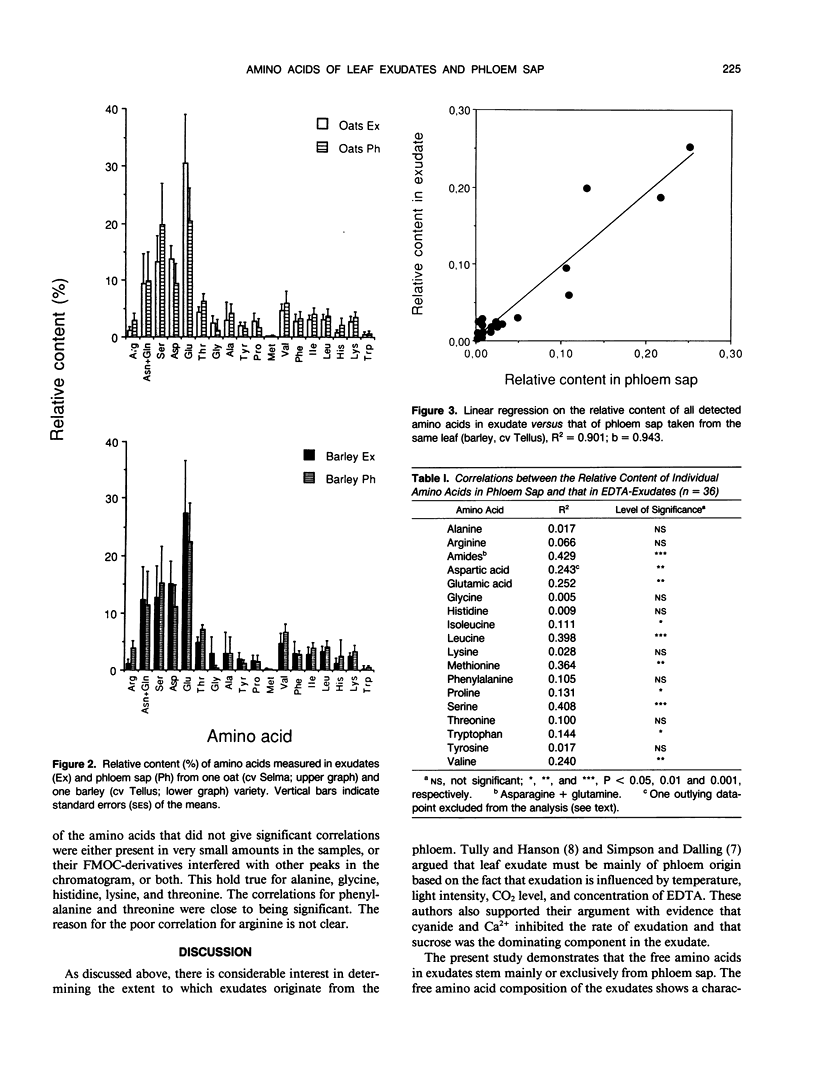
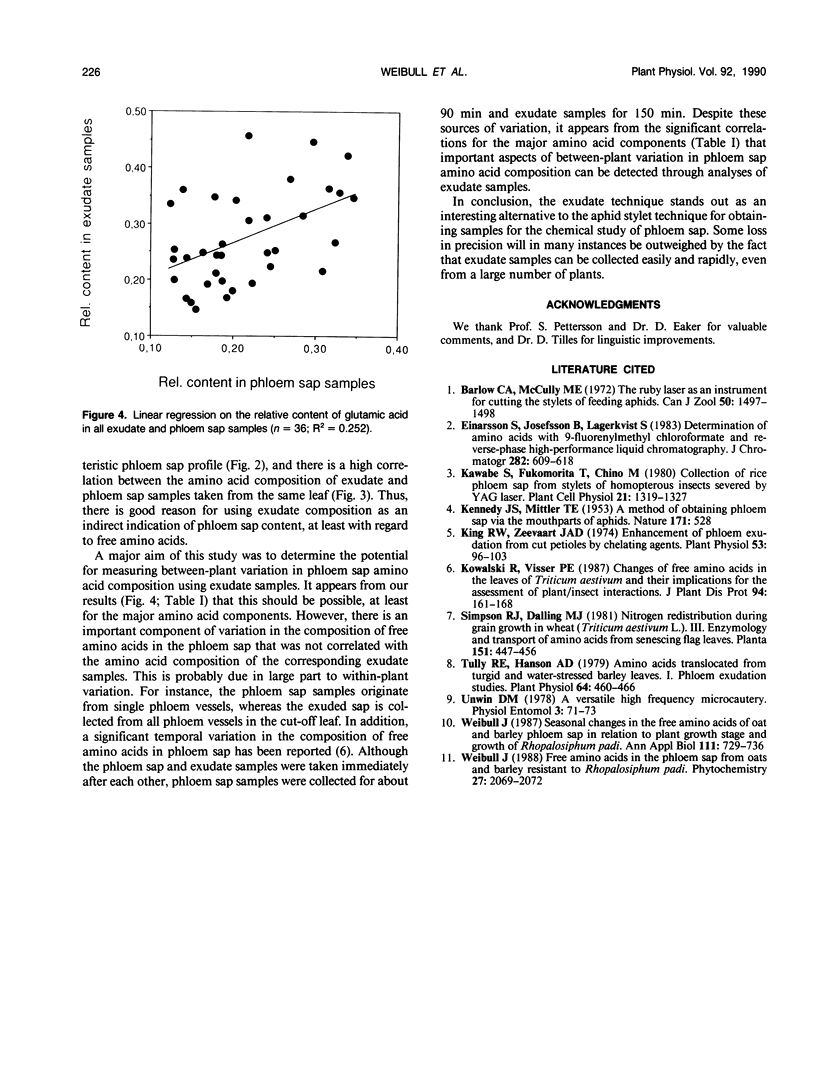
Selected References
These references are in PubMed. This may not be the complete list of references from this article.
- King R. W., Zeevaart J. A. Enhancement of Phloem exudation from cut petioles by chelating agents. Plant Physiol. 1974 Jan;53(1):96–103. doi: 10.1104/pp.53.1.96. [DOI] [PMC free article] [PubMed] [Google Scholar]
- Tully R. E., Hanson A. D. Amino Acids Translocated from Turgid and Water-stressed Barley Leaves: I. Phloem Exudation Studies. Plant Physiol. 1979 Sep;64(3):460–466. doi: 10.1104/pp.64.3.460. [DOI] [PMC free article] [PubMed] [Google Scholar]
- WAGGE L. E., MITTLER T. Shell regeneration in some British molluscs. Nature. 1953 Mar 21;171(4351):528–529. doi: 10.1038/171528b0. [DOI] [PubMed] [Google Scholar]


